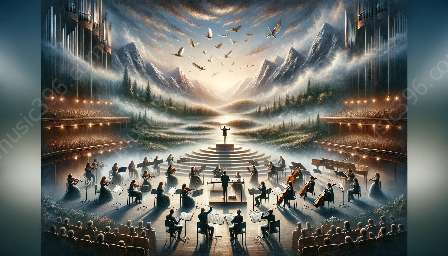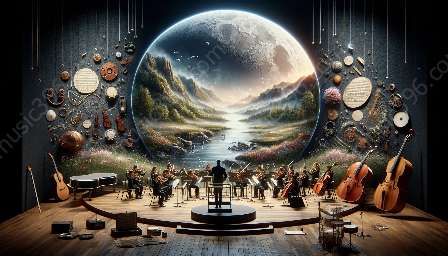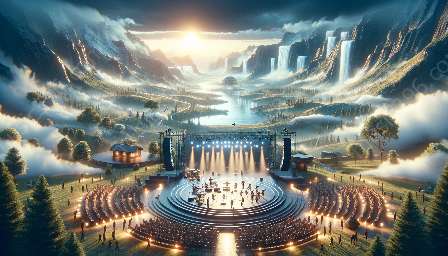Opera is a complex art form that requires a combination of exceptional vocal skills, compelling stage presence, and deep emotional interpretation. Successful operatic performances are the result of meticulous preparation, profound musical understanding, and a nuanced understanding of dramatic storytelling. In this article, we will explore the key elements that contribute to a successful operatic performance, drawing from the rich traditions of operatic studies and music reference.
Vocal Technique
At the heart of any operatic performance lies the vocal technique of the singer. Operatic singers undergo rigorous training to develop the power, control, and flexibility required to deliver emotive and resonant performances. Key elements of vocal technique in opera include:
- Projection: Opera singers are trained to project their voices to fill large theaters without the aid of microphones, allowing them to convey emotion and drama to the audience.
- Range: The ability to navigate a wide vocal range, from the soaring high notes to the rich, low tones, is essential for delivering the demanding repertoire of operatic works.
- Resonance: Operatic singers strive to create a resonant, full-bodied sound that can be heard and felt throughout the performance space.
- Control: Precise control over vocal dynamics, vibrato, and breath support is crucial for conveying the emotional nuances of the music.
Artistic Interpretation
Operatic performers must possess a deep understanding of the historical context, musical structure, and dramatic narrative of the operatic works they interpret. Through meticulous study and artistic insight, they breathe life into the characters and narratives, creating a profound and moving experience for the audience. Key elements of artistic interpretation in opera include:
- Historical Understanding: Knowledge of the historical period in which the opera is set, as well as the social and cultural norms of the time, provides context for the performer's portrayal of characters and situations.
- Musical Understanding: Comprehension of the operatic score, including the intricacies of melody, harmony, and rhythm, allows performers to imbue their interpretations with musical authenticity.
- Dramatic Expression: Opera is a fusion of music and drama, and performers must master the art of conveying emotion, conflict, and resolution through vocal expression and physical presence.
- Character Development: Developing multi-dimensional characters through a combination of vocal delivery, physical movement, and psychological insight is crucial for engaging the audience and conveying the complexities of human experience.
Stage Presence
Opera is a visual as well as aural art form, and successful operatic performances are enriched by compelling stage presence. Key elements of stage presence in opera include:
- Physicality: Performers use their bodies and physical movements to convey emotion, intention, and relationships between characters, creating a dynamic and engrossing performance.
- Costuming: The art of costuming in opera enhances the visual storytelling, providing visual cues about character, social status, and historical context.
- Use of Space: Understanding how to utilize the stage space to create compelling stage pictures and convey dramatic tension is essential for captivating the audience.
- Gesture and Expression: Mastery of facial expression, hand gestures, and body language allows performers to communicate emotions and thoughts with clarity and impact.
Preparation and Collaboration
Successful operatic performances require extensive preparation and collaboration among performers, musicians, directors, conductors, and production teams. The following elements contribute to the preparation and collaborative nature of operatic performances:
- Rehearsal Process: Intensive rehearsals are essential for refining vocal technique, blocking, staging, and ensemble work, as well as for developing a unified interpretation among all participants.
- Musical Collaboration: Opera is a collaborative art form, and successful performances rely on the synergy between singers, instrumentalists, and conductors to create a seamless musical experience.
- Directorial Vision: The director's vision shapes the overall artistic concept of the production, guiding performers in their character development, stage movement, and dramatic arc.
- Production Design: Elements such as set design, lighting, and props contribute to the immersive and evocative world of the opera, enhancing the storytelling and emotional impact.
Emotional Resonance
Ultimately, the success of an operatic performance is measured by its emotional resonance with the audience. Key elements that contribute to emotional resonance in opera include:
- Authenticity: The ability of performers to embody the emotional truth of their characters and the music, creating a profound connection with the audience.
- Transcendence: Opera has the power to transcend language barriers and cultural differences, evoking universal emotions and experiences that resonate with audiences worldwide.
- Catharsis: Through the emotional depth and intensity of their performances, operatic artists have the potential to provide cathartic experiences for audience members, eliciting empathy, reflection, and transformation.
By understanding and integrating these key elements, operatic performers can strive to create compelling and unforgettable performances that resonate with audiences on a profound level.









































